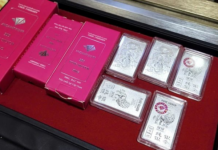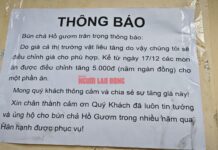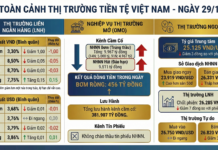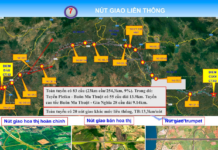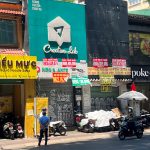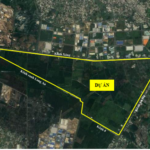The bustling streets of District 1, Ho Chi Minh City, Vietnam, usually illuminated by vibrant lights and bustling with tourists, are now revealing a different story. Under the dim glow of streetlights, the disorderly sidewalks and roads expose a neglected side of the city, with trash strewn about and an air of unhygienic and unsafe conditions.

Phạm Ngũ Lão Street tells a tale of littering, with trash carelessly discarded under the trees, creating an eyesore and a potential health hazard.
|
 The situation is no better on Nguyen Thai Hoc Street, where garbage lines the roadside, marring the beauty of the district.
|
Venturing into the heart of the city’s nightlife, I found myself in the tourist hub, only to be greeted by a potent mix of odors, including the distinctive scent of “laughing gas” wafting from the nearby budget bars. The streets were littered with trash, and individuals from the LGBTQ+ community loitered on both sides, creating an atmosphere far from the district’s intended allure.
Setting aside sensitive elements, a mere glance at this small corner of the city center raises several concerns. Has the district, aside from implementing fee-based sidewalks, taken a holistic approach to ensuring the cleanliness and safety of these areas? As a tourist hub, what proactive measures has the district taken to keep each street and neighborhood pristine and welcoming? Are there regulations and penalties in place for businesses, households, and landlords who repeatedly fail to manage their waste properly and adhere to designated trash disposal times?
Additionally, has there been any effort to standardize trash receptacles to meet both hygienic and aesthetic standards? How are trash collection times organized to ensure that the city, particularly District 1, maintains a consistently trash-free environment?
Beyond the administrative responsibilities of the district committee and functional units, what role have propaganda, mobilization, supervision, and reminders played in addressing this issue? How has the inter-sectoral collaboration between various organizations been reflected in both practical inspections and written reports?
Given the persistent nature of this problem, what evaluations and accountability measures will be implemented to address the limitations, causes, and ineffective solutions of previous inspections, campaigns, and even special operations? Most importantly, what is the definitive solution moving forward?
District 1 is unique in that the Chairman of the City People’s Committee personally attends the district’s Party Executive Committee meetings, providing guidance on critical issues concerning not only the district but also the city’s overall development. These discussions often revolve around financial targets, such as budget allocations, and the goal of maintaining a “clean and beautiful” city, attracting tourists and businesses alike.
However, despite these efforts and the ongoing improvements to the Ben Thanh – Suoi Tien metro line and the city’s urban renovation projects, District 1’s daily reality falls short of expectations. Aside from the trash and disorganization, even a short stretch of sidewalk on the prestigious Dong Khoi Street, from Ton Duc Thang to Dong Du, poses a safety hazard due to broken and uneven pavement, resulting in trips and falls, including injuries, among tourists and locals alike.
When confronted with this issue, the response received was that, with the implementation of urban administration, districts in Ho Chi Minh City no longer have the authority to balance their budgets independently. Instead, they can only operate within the scope of the state budget allocated to them, which hinders their ability to address issues like replacing a single broken tile on a sidewalk if it falls outside the allocated funds.
While we await the resolution of these bureaucratic hurdles and the implementation of the city’s Special Resolution 98, it is essential to question how these challenges have been addressed and what solutions have been proposed. Tourists and residents should not be expected to understand the intricacies of budget allocations and policy implementations; they only see a city with grand projects and ambitions struggling to maintain clean, safe, and attractive streets and sidewalks.
These questions are directed to District 1, seeking answers and, more importantly, actionable solutions to restore the district’s reputation and ensure a positive experience for all who visit.
Proudly taking Vietnamese brands to the global stage
As the airline that revolutionized air travel for the less fortunate, while also being a strong pioneer in going global with many international routes, this brand has reached international recognition and has been mentioned by the Prime Ministers of Australia, Thailand, and the President of Indonesia in meetings with Prime Minister Pham Minh Chinh.
Minister of Transport: Don’t complete the North-South Highway without rest stops
Minister Nguyen Van Thang has instructed that, in the second phase of the North-South high-speed projects, there should be no unfinished roads without rest stops. These rest stops will be places to promote the “delicious and unique products” of each region to tourists traveling from North to South.


